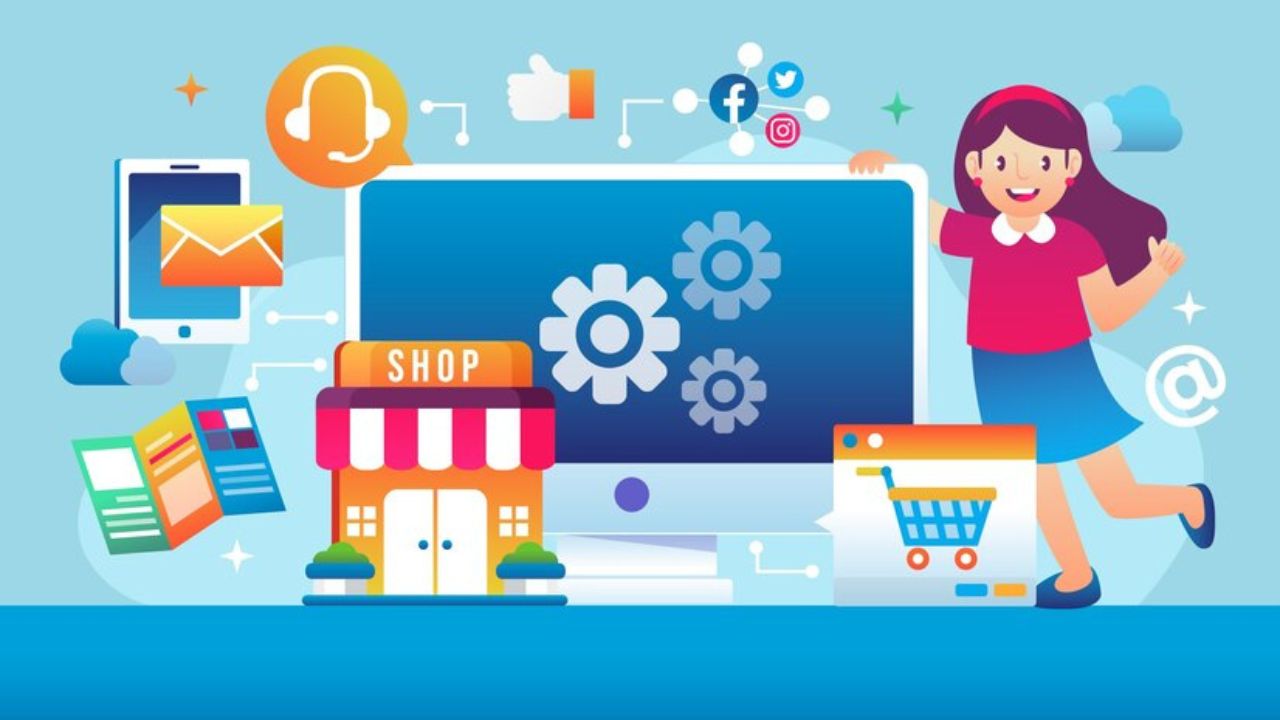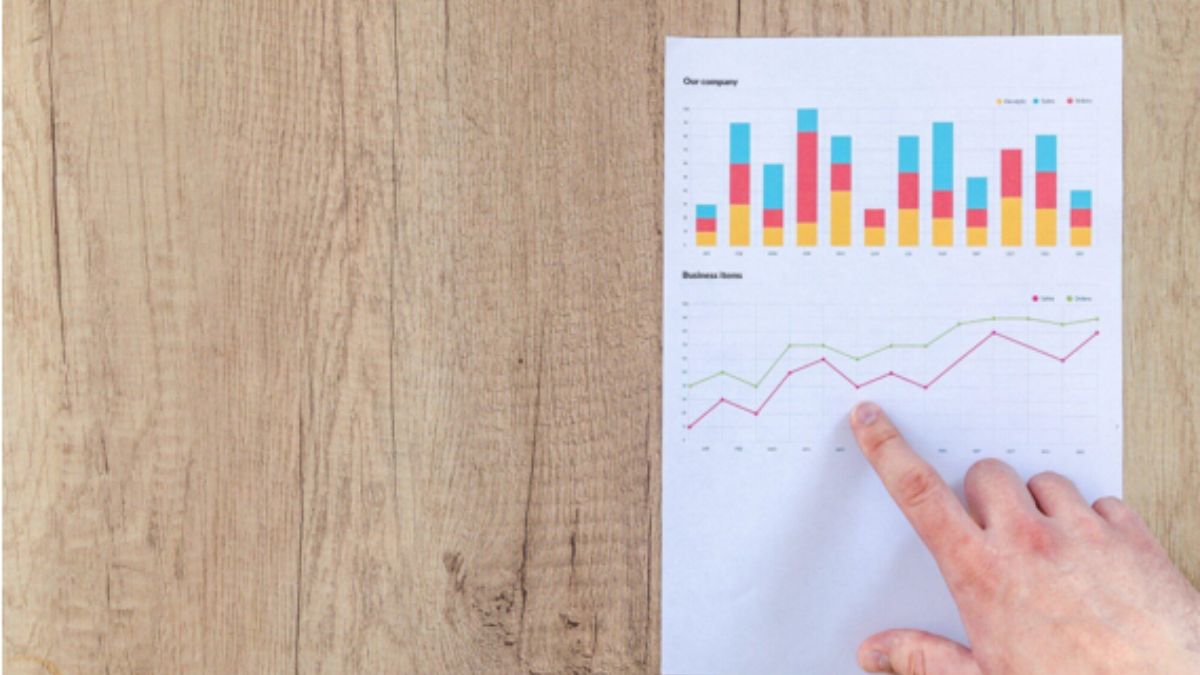BUSINESS
Dealasty: Unlocking the Best Deals Online Like a Pro!

In today’s digital age, online shopping has become more than just a convenience; it’s a way of life. But with countless options and prices varying as much as the weather, how do you ensure you’re getting the best deal? That’s where Dealasty comes in—a platform designed to help you discover amazing deals and discounts effortlessly. This blog post will guide you through the ins and outs of using Dealasty effectively, ensuring you maximize savings and shop like a pro. Whether you’re a seasoned online shopper or just starting, read on to learn tips, tricks, and strategies to become a savvy deal hunter.
The Rise of Online Shopping
The internet revolutionized shopping, making it possible to browse and buy from the comfort of home. Gone are the days of waiting in long lines or rushing through crowded malls. Now, with just a few clicks, you can compare prices, read reviews, and have products delivered to your doorstep. This convenience, combined with an array of choices, has made online shopping incredibly popular. However, it also means navigating a vast sea of options, which can be overwhelming without the right tools.
Online shopping has also changed the way businesses operate. They can reach a wider audience and offer products globally, breaking geographical barriers. This increased competition has often resulted in better prices for consumers. However, not every price is the lowest, and that’s where platforms like Dealasty prove invaluable. They help shoppers sift through the noise to find true value.
But with this convenience comes its own set of challenges. The sheer amount of information and choices can lead to decision fatigue. It’s easy to get lost amidst endless options, which can make shopping feel more like a chore than a pleasure. That’s why tools and strategies for finding the best deals are more crucial than ever.
Introducing Dealasty
Dealasty is a game-changer in the world of online shopping. It aggregates deals from various retailers, allowing users to see all available discounts in one place. This makes it simpler to compare prices and ensure you’re getting the best possible deal. With just a few clicks, you can access a plethora of offers tailored to your preferences.
One of the standout features of Dealasty is its user-friendly interface. Even if you’re new to online shopping, navigating the platform is a breeze. The platform organizes deals into categories, making it easy to find exactly what you’re looking for, whether it’s electronics, fashion, or home goods. Plus, Dealasty updates frequently, ensuring you’re always in the loop about the latest deals.
Additionally, Dealasty offers a personalized experience. By understanding your shopping habits and preferences, it tailors deals to suit your needs. This not only saves time but also ensures you never miss out on an offer that’s perfect for you. It’s like having a personal shopping assistant at your fingertips.
Why Use Dealasty?
The benefits of using Dealasty extend beyond just finding great deals. For one, it saves you time. Instead of jumping from site to site, trying to find the best price, Dealasty consolidates everything in one place. This streamlining means you can spend more time enjoying your purchases rather than searching for them.
Another reason to use Dealasty is its accuracy. With so many deals floating around online, it’s easy to fall for outdated or misleading offers. Dealasty ensures that all deals are current and legitimate. This reliability builds trust and gives you peace of mind when making a purchase.
Finally, Dealasty offers a sense of community. Users can share deals, tips, and experiences, creating a collaborative shopping environment. This collective knowledge can be invaluable, especially when you’re uncertain about a purchase. Having access to real opinions from fellow shoppers can make all the difference.
Setting Up Your Dealasty Account
Getting started with Dealasty is quick and easy. First, head to the website and sign up using your email address. Once you’ve verified your email, you can start setting up your profile. This involves selecting your preferred categories, ensuring you receive deals most relevant to your interests.
After setting up your preferences, explore the dashboard. Here, you’ll see a curated list of deals tailored just for you. You can also explore trending deals, ensuring you’re always in the loop about popular offers. The platform’s intuitive design makes it easy to find your way around and get accustomed to its features.
For added convenience, consider setting up notifications. This way, you’ll receive alerts whenever a new deal matching your interests becomes available. With Dealasty’s seamless setup process, you’ll be on your way to becoming a savvy shopper in no time.
Navigating the Dealasty Interface
Once you’re set up, it’s time to explore the Dealasty interface. At first glance, you’ll notice the sleek design, which prioritizes easy navigation. The homepage showcases featured deals, giving you a quick overview of current highlights. You can browse these or head straight to categories of interest.
The search bar is another invaluable tool. Simply type in a product or brand you’re interested in, and Dealasty will present available deals. This feature is especially useful if you’re looking for something specific and don’t want to wade through multiple listings.
Additionally, Dealasty’s filtering options allow you to narrow down your search. Filter by price range, brand, or even discount percentage. These tools ensure you’re always in control, finding exactly what you need without added hassle.
Finding the Best Deals with Dealasty
With Dealasty’s vast selection, finding top deals is effortless. Start by browsing the featured section, which highlights the most popular and significant discounts. These are often limited-time offers, so grab them while you can!
For more specific needs, utilize the category sections. Whether you’re shopping for electronics, fashion, or groceries, each category offers a refined selection of deals. This organization helps you quickly zoom in on the best offers without wasting time.
Remember, deal hunting isn’t just about the biggest discount. It’s about value. Consider factors like brand reputation, product reviews, and warranty before making a purchase. Dealasty provides all this information at a glance, making informed decisions easier.
Maximizing Savings with Alerts and Notifications
To truly master Dealasty, take advantage of its alert and notification system. By setting up alerts, you’ll receive instant notifications when deals matching your interests go live. This ensures you never miss out on a great offer.
You can customize these alerts based on your preferences. Set them for specific products, brands, or even price drops. This level of customization means you only get notified about deals that matter most to you, avoiding unnecessary clutter.
Furthermore, Dealasty’s daily digest option provides a summary of top deals, delivered straight to your inbox. This feature is perfect for those who want to stay updated without constantly checking the platform. With alerts and notifications, you control your shopping experience.
Engaging with the Dealasty Community
One of Dealasty’s unique features is its community aspect. Here, users can share deals, reviews, and shopping tips. Engaging with the community not only helps you discover new offers but also allows you to share your experiences.
Participating in discussions and forums can provide insights not available elsewhere. Fellow shoppers might share hidden gems or offer advice on the best time to buy certain products. This shared knowledge enhances your shopping strategy.
Building connections within the Dealasty community also means you can trust recommendations. With real user feedback and shared experiences, you can confidently make purchases, knowing they’ve been vetted by others.
Smart Shopping Tips for Deal Hunters
While Dealasty provides the tools, smart shopping requires strategy. First, always compare similar products. Just because a deal looks great doesn’t mean it’s the best option available. Dealasty’s comparison feature ensures you see all your options.
Next, keep an eye on seasonal sales. Retailers offer significant discounts during holidays or end-of-season sales. Planning your shopping around these times can lead to substantial savings. Dealasty often highlights these events, keeping you informed.
Lastly, be patient. While it’s tempting to grab a deal immediately, waiting might yield better discounts. Use Dealasty to track price changes and ensure you strike when the price is right.
Staying Safe While Shopping Online
Safety should always be a priority when shopping online. Dealasty ensures that all listed retailers are reputable, but it’s crucial to remain vigilant. Always check that websites are secure before entering payment information.
Be wary of deals that seem too good to be true. Scammers often lure shoppers with unrealistic offers. Dealasty’s vetting process minimizes this risk, but personal caution is essential.
Lastly, regularly monitor your bank statements. This ensures any unauthorized transactions are caught early. Combining Dealasty’s secure platform with your proactive measures ensures a safe and enjoyable shopping experience.
The Future of Online Shopping
The landscape of online shopping continues to evolve rapidly. With advancements in technology, personalized shopping experiences will become even more seamless. Platforms like Dealasty are at the forefront, adapting to trends and offering innovative solutions.
AI and machine learning are already being integrated, predicting consumer behavior and enhancing the shopping experience. These advancements mean platforms will become even more tailored, making finding deals quicker and easier.
For consumers, this evolution promises a more intuitive and rewarding shopping experience. By staying informed and using platforms like Dealasty, you’ll always be ready to adapt to these changes and enjoy the best online shopping has to offer.
Conclusion and Next Steps
In conclusion, Dealasty is your ultimate companion for navigating the world of online shopping. With its comprehensive deal aggregation, user-friendly interface, and engaging community, it empowers you to shop smarter and save more.
For those keen on maximizing their savings, incorporating the tips and strategies outlined here will elevate your shopping experience. Whether you’re a seasoned deal hunter or just starting, Dealasty offers the tools and insights needed to succeed.
Ready to revolutionize your shopping habits? Start exploring Dealasty today, and join a community of savvy shoppers who know how to find the best deals effortlessly. Happy shopping!
BUSINESS
Jeep Wrangler: Off-Road Capability and Towing Tips

The Jeep Wrangler has long stood as an icon of rugged freedom, off-road adventure, and American ingenuity. With its unmistakable design and trail-tested durability, the Wrangler appeals to off-road enthusiasts, overlanders, and everyday drivers alike. But beyond its rock-crawling prowess, the Wrangler also offers respectable towing capacity and versatility for hauling gear, trailers, or boats.
In this guide, we’ll explore the Jeep Wrangler’s off-road capabilities, delve into towing tips, and provide key advice for making the most of this legendary 4×4 vehicle.
The Jeep Wrangler Legacy: Built for Adventure
From its roots as a military vehicle during World War II, the Jeep Wrangler has evolved into a lifestyle symbol for those who crave freedom and off-grid exploration. Its boxy shape, removable doors, fold-down windshield, and robust drivetrain contribute to a unique driving experience that’s tailor-made for off-road challenges.
Modern versions like the Jeep Wrangler JL and Wrangler Rubicon integrate cutting-edge technology with heritage design, enhancing both on-road comfort and trail-rated performance.
Off-Road Capabilities of the Jeep Wrangler
The Wrangler’s off-road prowess is more than just marketing—it’s engineered for real-world conditions. Here are the key features that make it one of the best off-road SUVs on the market:
1. 4×4 Drivetrain Systems
The Jeep Wrangler offers two primary 4×4 systems:
-
Command-Trac® 4×4: Great for everyday off-road and light to moderate trails.
-
Rock-Trac® 4×4: Standard on the Rubicon, designed for serious rock crawling and steep terrain.
These systems allow drivers to switch between 2WD and 4WD, with low-range gearing for extreme conditions.
2. High Ground Clearance
With up to 10.8 inches of ground clearance, the Wrangler can easily traverse rocks, ruts, and deep snow. Optional 33-inch or 35-inch tires improve approach and departure angles, allowing for safer and smoother climbs or descents.
3. Solid Axles and Suspension Travel
The use of Dana® 44 heavy-duty axles, paired with a coil-spring suspension, ensures better articulation and wheel travel. This setup allows the Wrangler to maintain traction even when a tire lifts off the ground.
4. Skid Plates and Tow Hooks
Factory-installed skid plates protect the undercarriage from rocks and debris, while front and rear tow hooks come in handy during recovery situations. These are essential for serious off-roading.
5. Water Fording and Trail Rated® Badge
With a water fording depth of up to 30 inches, the Wrangler can handle stream crossings with ease. The Trail Rated® badge on select trims indicates testing in five key off-road areas: traction, water fording, maneuverability, articulation, and ground clearance.
Towing Capacity of the Jeep Wrangler
While not traditionally known as a heavy hauler, the Jeep Wrangler’s towing capacity has improved over the years. Towing requirements depend on the trim level, engine type, and equipment.
Towing Capacities by Model:
| Wrangler Model | Max Towing Capacity |
|---|---|
| 2-Door Wrangler | 2,000 lbs |
| 4-Door Wrangler Unlimited | 3,500 lbs |
| Wrangler 4xe (Plug-In Hybrid) | 3,500 lbs |
| Wrangler Rubicon 392 (V8) | 3,500 lbs |
Note: Always consult the owner’s manual and ensure your Wrangler is properly equipped with the towing package.
Best Engines for Towing
Several powertrain options are available, and each impacts towing performance:
-
3.6L Pentastar® V6 (285 hp): A solid all-around performer with good towing capability.
-
2.0L Turbocharged I4 (270 hp): Provides more torque than the V6 and handles moderate towing with efficiency.
-
3.0L EcoDiesel V6 (260 hp, 442 lb-ft torque): Excellent for those who need low-end grunt for heavier loads.
-
6.4L HEMI® V8 (470 hp): Found in the Rubicon 392, this is more about performance but handles towing with ease.
Towing Tips for Jeep Wrangler Owners
Whether you’re towing a jet ski, small camper, or utility trailer, it’s crucial to tow safely and efficiently with your Jeep Wrangler. Follow these essential tips:
1. Use the Right Hitch and Equipment
Invest in a Class II or III hitch receiver, depending on your Wrangler model and load. Ensure your ball mount matches the trailer coupler and weight requirements. Use trailer safety chains and a trailer brake controller if required.
2. Balance the Load
Distribute weight evenly across the trailer. Keep 60% of the weight in the front half of the trailer and avoid overloading one side. Proper tongue weight (10–15% of trailer weight) ensures better control and reduces sway.
3. Check Tire Pressure and Suspension
Before towing, check tire pressures on both the Jeep and trailer. Properly inflated tires improve handling and fuel economy. Also, consider air springs or load-leveling suspension upgrades for frequent towing.
4. Adjust Driving Habits
Towing changes how your Wrangler handles. Allow for longer braking distances, make wider turns, and reduce speed on steep inclines or descents. Always use lower gears when descending hills.
5. Monitor Transmission Temperature
If your Wrangler is towing close to its limit, especially in hot weather or on long climbs, use a transmission cooler or monitor temps using onboard diagnostics or a gauge.
Off-Roading with a Trailer: Can the Wrangler Handle It?
Absolutely—but with limitations.
If you’re planning to venture off-road while towing, stick to graded dirt roads or mild trails. Heavy off-roading with a trailer is not recommended unless you have:
-
A rugged off-road trailer with articulating hitch
-
Trailer brakes and all-terrain tires
-
Recovery gear and proper trail training
Overlanding setups, where you tow a compact expedition trailer or rooftop tent, are becoming more popular with Wrangler owners. These setups offer a great balance between off-grid living and mobility.
Upgrades to Enhance Towing and Off-Road Performance
If you’re serious about maximizing your Wrangler’s potential, consider these aftermarket upgrades:
-
Heavy-duty bumpers with tow points
-
Winch systems for self-recovery
-
Locking differentials and gear upgrades
-
Auxiliary lights and off-road tires
-
Upgraded cooling system or tow mirrors
Always verify that modifications comply with local laws and don’t exceed GVWR (Gross Vehicle Weight Rating).
Final Thoughts
The Jeep Wrangler continues to deliver on its promise as the ultimate off-road vehicle, but it’s also surprisingly capable when it comes to towing. Whether you’re pulling a small trailer to a campsite or crawling up a rocky slope, the Wrangler offers a blend of freedom, durability, and versatility unmatched by most SUVs.
BUSINESS
How to Leverage Visual Data to Enhance Office Presentations

Have you ever sat through an office presentation where the slides were full of text and hard to follow? Many people find it challenging to absorb information when it’s only presented in words.
This is where visual data comes in! By using charts, graphs, and images, you can make your presentation much more engaging and easier to understand.
Visuals can help convey complex ideas simply and quickly, making your message clearer and more impactful.
The Power of Visual Data
Visual data, like charts and graphs, can transform how you present information. People remember visuals better than text. This is important to remember when you want to make an impression during an office presentation.
Imagine explaining sales figures with a simple graph instead of a long paragraph filled with numbers. Your audience can quickly see trends, making it easier to grasp your message.
And when they understand better, it boosts your confidence! You’ll feel more assured as you present, knowing that your audience is on the same page.
Types of Visuals to Consider
When it comes to visual data for office presentations, several types can be quite effective. Here are some options to consider:
Charts and Graphs
Charts and graphs are your best friends when it comes to presenting data. A pie chart can show how parts make up a whole, while a line graph can illustrate trends over time. Both types of visuals are great for demonstrating relationships between different pieces of information.
For instance, if you want to share quarterly sales results, a bar graph can showcase each quarter side-by-side, allowing your audience to easily compare them. This helps them engage with the data quickly.
Images and Diagrams
Images can also enhance your office presentations by providing visuals that reinforce your message. A well-placed image can help your audience relate to the material, making it more memorable. For instance, if discussing teamwork, an image illustrating people collaborating can bring your point to life.
Diagrams can help illustrate processes or concepts that may be difficult to explain with words alone. A flowchart can clarify steps in a process, making it easier for your audience to follow along.
Designing Effective Visuals
Getting the visuals right is crucial for making your office presentations truly effective. Here are some tips for designing visuals that can enhance your presentations:
Keep It Simple
One of the biggest mistakes when using visual data is clutter. Avoid cramming too much information into a single slide.
Instead, focus on one key idea at a time. This helps your audience concentrate on what you are saying without getting overwhelmed.
Using white space strategically can make your slides easier to read and visually pleasing. This makes it easier to follow your presentation and helps maintain attention.
Choose the Right Colors
Colors can greatly affect how your visuals are perceived. Choose a color scheme that is both pleasing to the eye and appropriate for the content. For professional presentations, stick to neutral colors with accents that draw attention to key points.
A good guideline is to use contrasting colors for text and backgrounds to ensure readability. Avoid using too many colors that could distract or confuse your audience.
Engaging Your Audience with Visual Data
Once you have your visual data ready, it’s time to use it to engage your audience. Here are some effective strategies:
Interactive Elements
Adding interactive elements to your presentation can boost engagement significantly. For example, instead of just showing a slide with information, consider using software that allows your audience to interact with visual data.
For instance, if you’re showing a dataset, you could invite your audience to help analyze it. This makes the presentation feel more collaborative and less like a lecture.
Tell a Story
Everyone loves a good story, and integrating storytelling into your presentations can make your visual data even more compelling. Start with a problem or situation, show how the data relates to that problem, and then present your solution while utilizing visual aids.
This approach not only grabs attention but also helps your audience connect emotionally with the content. They will remember your story long after the presentation ends.
Use Comparisons to Spark Curiosity
Highlighting changes over time or differences between categories can spark curiosity. Side-by-side charts or before-and-after visuals quickly show impact and evolution. This invites your audience to ask why things changed, keeping them mentally engaged and more likely to participate in discussions or ask questions.
Incorporate Visual Variety
Avoid using the same type of chart repeatedly. Mixing in different formats-such as line graphs, heat maps, scatter plots, or timelines-can help maintain attention and prevent visual fatigue. It also allows different insights to stand out more effectively. Just be sure each visual serves a purpose and supports your main message.
Practicing Your Presentation Skills
Once you’ve created your visuals and planned your presentation, practice is key to success. Rehearse several times to ensure you feel comfortable with the material. This will also help you identify any areas where you might stumble or lose your audience’s interest.
As you practice, pay attention to how you incorporate your visual data. Make sure you are pointing out key elements on the visuals at the appropriate times in your speech. This will help reinforce your message and keep your audience engaged.
Building Your Own Chart
If you want to make your presentations even more effective, you should consider building your own chart tailored to your specific message. Many software tools allow you to create customized visuals that can clearly convey what you want to communicate.
By building your own charts, you can ensure they fit perfectly with the narrative you are trying to present. This customization can make a significant difference in delivering a strong, impactful message to your audience.
By boosting your presentation skills with visual data, you not only help your audience but also build your confidence as a speaker. Take the time to prepare and practice, and you will surely see improvement in how your presentations are received.
Elevate Your Presentations with Visual Data
In today’s fast-paced business environment, making an impact during office presentations is essential. Leveraging visual data can greatly enhance your ability to communicate your ideas effectively. Remember to use clear, simple designs that engage your audience, and don’t hesitate to make your visuals interactive.
So, take action today and start using visual data to make your office presentations stand out!
You can find more useful and interesting articles on our website. Be sure to visit us and read more.
BUSINESS
Innovative Coaching Techniques for Community Leaders

Want to help your community leaders grow and lead better? Coaching can make a big difference. New and creative methods are changing the way leaders learn.
These techniques build skills, boost confidence, and inspire action. This guide will show you easy ways to coach with impact.
Keep reading to help your leaders shine and succeed.
Build Trust First
Trust is the base of every strong coaching relationship. Community leaders need to feel safe and respected. Start by showing honesty and care in every talk. Listen without judging or rushing. Be open about your role and goals. Keep all shared information private.
Follow through on what you promise. Small actions can build big trust. Use kind words and a calm tone. Make time to really get to know the leader. Trust helps leaders open up and grow faster.
Ask Powerful Questions
Good questions help leaders think deeply. They guide the leader to find their own answers. Use open-ended questions that start with “what” or “how.” Avoid yes or no questions when possible. Let the leader take time to respond. Don’t rush the process.
Powerful questions can spark new ideas. They help leaders see challenges in a new way. Ask questions that focus on goals and values. Keep your tone calm and curious. The right question can lead to real change.
Use Active Listening
Active listening shows you care about what the leader says. It means paying full attention without interrupting. Use body language like nodding to show you are engaged. Repeat or rephrase what you hear to confirm understanding. Ask follow-up questions to dig deeper.
Avoid thinking about your response while the leader talks. Focus on their feelings and words. This helps build trust and connection. Leaders feel valued when they are truly heard. Listening well uncovers important insights. It also encourages honest sharing. Good listening is a key coaching skill.
Create Action Plans
Action plans help leaders turn ideas into steps. They break big goals into smaller, clear tasks. Each step should have a deadline. This keeps leaders focused and on track. Include what resources or support they need. Write down the plan so it is easy to follow.
Review the plan regularly to see progress. Adjust steps if something is not working. Encourage leaders to take responsibility for their actions. Celebrate small wins along the way. Action plans make leadership growth real and doable. They turn coaching into results.
Reflect and Improve
Reflection is important for leaders to grow and improve. After each coaching session, take time to think about what went well. Also, consider what could be done differently next time. Honest reflection helps leaders understand their strengths and weaknesses.
Coaches can help by asking thoughtful questions. Writing down your thoughts can make learning clearer. Feedback from others is useful too. This process helps leaders make better decisions. It shows where changes are needed. Small improvements add up over time. Learn more here about business coaching and keep practicing reflection regularly.
Explore Coaching Techniques for Community Leaders
Community leaders play a big role in making change. Good coaching helps them grow strong and confident. Simple techniques can make a big difference.
With the right support, leaders can inspire their teams. Investing in leaders means a better community for all.
Looking for more tips and ideas? We’ve got you covered. Check out some of our other posts now.
-

 HEALTH1 year ago
HEALTH1 year agoIntegrating Semaglutide into Your Weight Loss Plan: A Practical Guide
-

 HOME IMPROVEMENT1 year ago
HOME IMPROVEMENT1 year agoHow to Choose the Perfect Neutral Area Rug for Every Room
-

 LAW1 year ago
LAW1 year agoPost-Divorce Considerations in California: Modifications and Long-Term Planning
-

 LAW1 year ago
LAW1 year agoTeenage Drivers and Car Accidents in California: Risks and Parental Liability
-

 CONSTRUCTION1 year ago
CONSTRUCTION1 year agoConstruction Site Safety Regulations in New York and Your Rights as a Worker
-

 FINANCE1 year ago
FINANCE1 year agoDigital Asset Management in Florida Estate Planning
-

 LAW1 year ago
LAW1 year agoKentucky’s School Football: Concussions, Injuries, and Legal Options
-

 LAW1 year ago
LAW1 year agoGang Activity and Criminal Charges in CA: Protecting Your Rights
